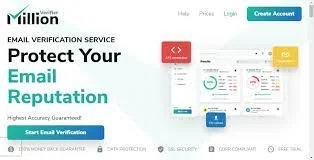Keeping email lists clean is often overlooked but remains a crucial step for any business or organization that communicates with its audience online. Using an email verification API at the beginning of your process helps ensure your emails actually reach real people, not dead inboxes or fake addresses that bounce back and hurt your sender reputation.
When businesses send emails to large lists that haven’t been verified, they risk higher bounce rates, spam complaints, and wasted resources. Over time, this can damage their domain’s trustworthiness with email providers. Many don’t realize that sending to invalid addresses repeatedly can get legitimate emails flagged as spam or blocked entirely.
Another challenge with unverified lists is that they often contain typos or fake sign-ups. Sometimes people enter wrong addresses by mistake. Other times, bots fill out forms with fake emails that lead to hard bounces later. Both scenarios cost money, time, and trust. For small businesses with tight budgets, every email that doesn’t land in an inbox is a missed opportunity.
One good practice is to check emails at the point of collection. By plugging an email verification API into your sign-up or checkout forms, you filter out invalid addresses right away. This reduces fake registrations, improves deliverability, and means fewer headaches down the line. Clean lists also make your email marketing data more reliable, so you can measure your open rates, clicks, and conversions accurately.
Verified lists do more than protect your sender score — they also help maintain a better relationship with your audience. Nobody likes to receive duplicate emails or promotions meant for someone else. When your contact list is accurate, your messages land where they should, keeping your audience engaged and respecting their inbox.
Another overlooked benefit is cost. Most email service providers charge based on list size or emails sent. Paying to send emails to addresses that bounce or don’t exist wastes budget that could be used elsewhere. A small investment in verification tools can help cut these hidden costs significantly.
Of course, verifying an email list once is good — but making it an ongoing habit is better. Lists decay naturally over time as people switch email providers, abandon old accounts, or make typos when signing up again. A regular clean-up keeps things fresh and your deliverability healthy.
Some companies still rely on manual checks or bounce reports to spot bad emails. This is time-consuming and reactive instead of proactive. Integrating an email verification API into your workflows does this work automatically, saving time and keeping your lists accurate in real-time.
When done right, email verification doesn’t feel like an extra step — it simply becomes part of how you collect and manage data responsibly. With trust in short supply online, clean contact lists are more than a technical detail — they’re part of building a reliable reputation and making sure your messages reach the people who actually want to read them.







